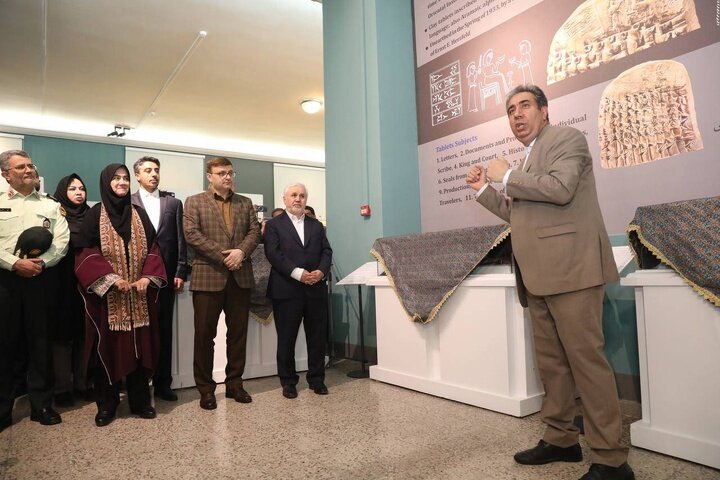Recovered Achaemenid tablets from U.S. unveiled at National Museum

TEHRAN - A significant section of Achaemenid tablets, lately recovered from the United States, was unveiled today at the National Museum of Iran.
The unveiling ceremony was attended by prominent figures including Jebrael Nokandeh, the Director of the National Museum of Iran, Ali Darabi and Maryam Jalali Dehkordi, two deputy ministers of Cultural Heritage, Tourism, and Handicrafts, along with numerous cultural heritage enthusiasts.
The exhibit features 160 tablets, a curated selection from the 3,500 tablets that were returned to Iran from the U.S. last year.
Speaking at the event, Nokandeh highlighted the importance of these tablets, stating that they are crucial for understanding the administrative and economic systems of the Achaemenid era (c. 550 – 330).
The exhibit will be open to the public at the National Museum of Iran until the end of Tir (July 21).
These tablets, which include letters, seals, and geographical documents, offer a clear glimpse into the highly organized and transparent economy of the Achaemenid period. The artifacts detail various aspects of daily life and administrative affairs during the reign of Darius the Great, reflecting the meticulous record-keeping of that era.

Nokandeh noted that five shipments of tablets have been returned to Iran to date, with this recent collection comprising 3,500 pieces. Of these, 2,800 are written in Elamite script, while the remainder are in Aramaic.
The clay tablets provide insights into the administrative and accounting practices of the Achaemenid Empire, as well as the daily lives of workers and officials. They reveal respect for worker specialization and document various transactions, including the payment of mission allowances to officials and provisions for livestock.
Archaeologists affiliated with the University of Chicago discovered the tablets in the 1930s while excavating in Persepolis, the ceremonial capital of the Persian Empire. The institute has now resumed work in collaboration with colleagues in Iran, and the return of the tablets is part of a broader effort to strengthen ties between scholars in the two countries, said Gil Stein, director of the Oriental Institute at the University of Chicago.

Experts say that the tablets provide crucial sources of information, revealing economic, social, and religious data about the Achaemenid Empire (550-330 BC) and the broader Near Eastern region in the fifth century BC.
Persepolis, locally known as Takht-e Jamshid, was the ceremonial capital of the Achaemenid Empire. It stands out among archaeological sites for its unique architecture, urban planning, construction technology, and art.
Historical narratives state that Persepolis was burned by Alexander the Great in 330 BC, apparently as revenge against the Persians, as the Persian King Xerxes had burned the Greek city of Athens around 150 years earlier. At its height, the Achaemenid Empire was the largest and most enduring empire of its time, stretching from Ethiopia, through Egypt, to Greece, Anatolia (modern Turkey), Central Asia, and India.
AM
